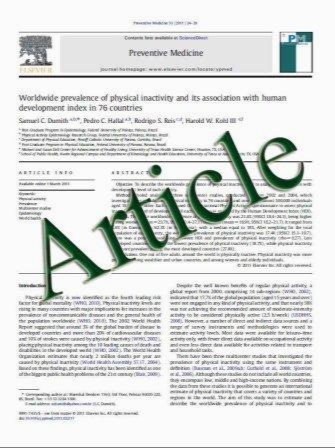First generation prognostic gene signatures for breast cancer predict both survival and chemotherapy sensitivity and identify overlapping patient populations
- نوع فایل : کتاب
- زبان : انگلیسی
- مؤلف : Takayuki Iwamoto Ju-Seog Lee Giampaolo Bianchini Rebekah E. Hubbard Elliana Young Junji Matsuoka Sang Bae Kim W. Fraser Symmans Gabrie
- چاپ و سال / کشور: 2011
Description
The aims of this study were to compare the performance of six different genomic prognostic markers to predict long-term survival and chemotherapy response on the same patient cohort and assess if clinicopathological variables carry independent prognostic and predictive values. We examined seven clinical variables and six previously described prognostic signatures on 228 tumors from patients who received homogeneous preoperative chemotherapy and had long-term follow-up information for survival. We used the area under the receiver operator characteristic curve (AUC) to compare predictors and also performed univariate and multivariate analyses including the genomic and clinical variables and plotted Kaplan-Meir survival curves. All genomic prognostic markers had statistically similar AUCs and sensitivity to predict 5-year progression-free survival (PFS, sensitivities ranged from 0.591 to 0.773, and AUCs: 0.599–0.673), overall survival (OS, sensitivities: 0.590–0.769, AUCs: 0.596–0.684) and pathologic complete response (pCR, sensitivities: 0.596–0.851, AUCs: 0.614–0.805). In multivariate analysis, the genomic markers were not independent from one another; however, estrogen receptor (Odds Ratio [OR] 7.63, P\0.001) and HER2 status (OR: 0.37, P = 0.021) showed significant independent predictive values for pCR. Nodal status remained an independent prognostic, but not predictive, variable (OR for PFS: 2.77, P = 0.021, OR for OS: 3.62, P = 0.01). There was moderate to good agreement between different prediction results in pair-wise comparisons. First-generation prognostic-gene signatures predict both chemotherapy response and long-term survival. When multiple predictors are applied to the same case discordant risk prediction frequently occurs.
DOI 10.1007/s10549-011-1706-9 Received: 18 April 2011 / Accepted: 27 July 2011


